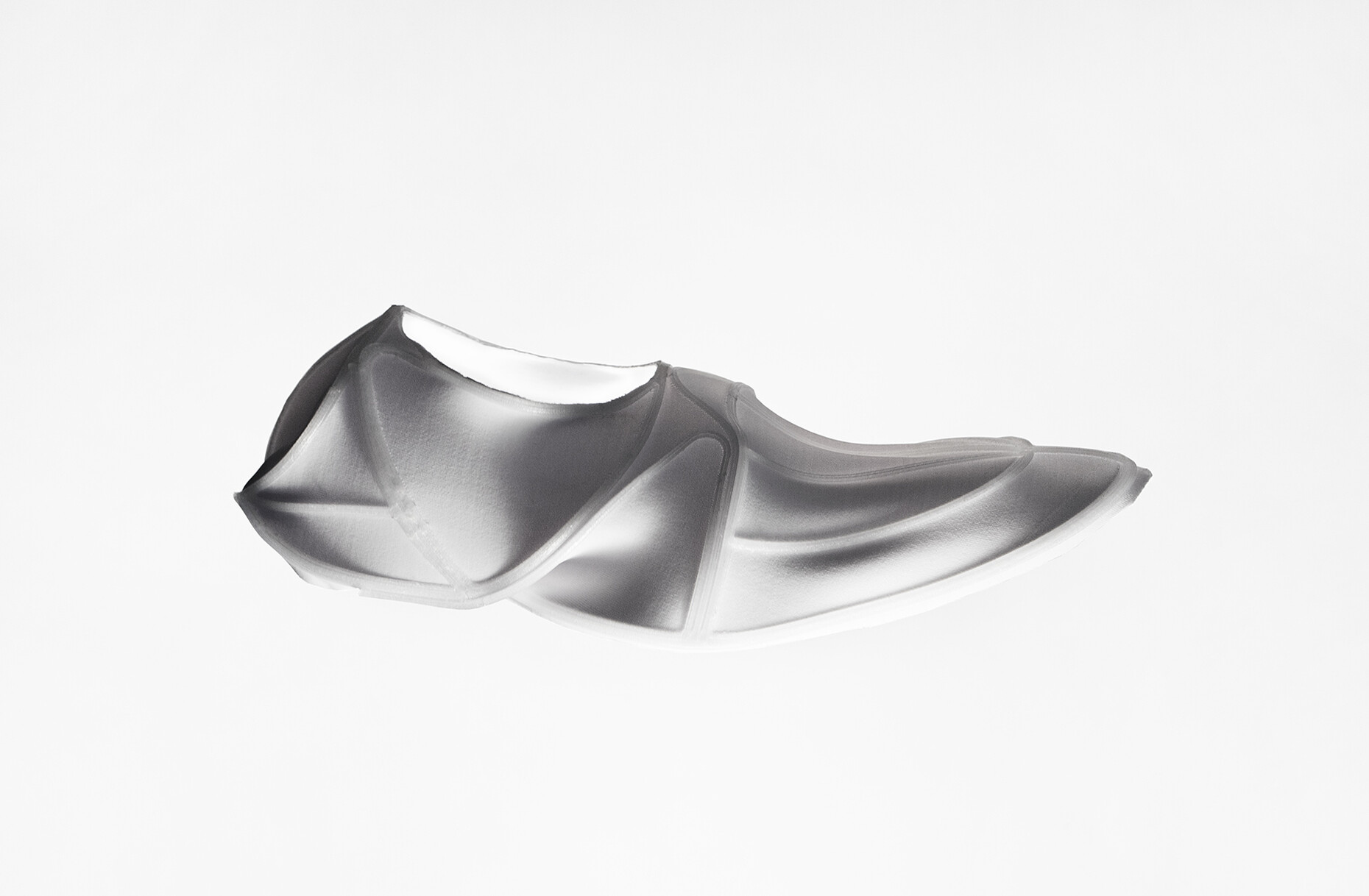Techtextil
Materials bursting with energy
As if by magic, 3D-printed structures alter their shape when exposed to heat, light or moisture. Trend researchers reckon that what began at the Self-Assembly Lab at MIT in the United States is one of the most promising future trends with a disruptive character: 4D printing! Researchers are hoping it will produce scenarios such as pipes that automatically adjust to suit the amount of liquid passing through them, furniture that assembles itself or car bodies that are capable of changing shape. Numerous institutes around the world are now conducting research on the subject of 4D printing.
Another field of technology that has developed in the slipstream of these research activities goes by the name “4D textiles”; its potential can be more easily tapped, and it could above all play a highly significant role for the textile industry. Essentially, it refers to an innovative technique in which pre-stretched textiles are printed with a synthetic material and subsequently execute a geometrical change in the third dimension. As the energy needed for this form-shaping process is already stored in the textile the transformation is achieved without additional energy inputs being required.
This development first came about at the end of 2014 at the Self-Assembly Lab of MIT. Various morphable structures were examined for a series of applications as“programmable textiles”. For example, in collaboration with Swiss designer Christophe Guberan objects were realized for the Life On Foot exhibition hosted by the footwear brand Camper at London Design Museum. A 4D printed shoe was presented there as an “active shoe”.
In cooperation with scientists from the Institute of Textile Technology (ITA) at RWTH Aachen University it proved possible to develop a simulation tool for predicting three-dimensional deformation. This allowed the team of researchers to work on 4D-textile applications for medical technology. One example was an exoskeleton produced by printing a pre-stretched textile with a polymer, which can make it easier for the wearer to perform certain movements thanks to the energy stored in it. Scientists at the ITA received the RWTH Aachen’s Innovation Award in 2017 for their work on “Additive Manufacturing of Hybrid Materials for Shape Shifting Applications”.
Delighted at the many new options 4D-textiles offer, designers and architects are increasingly exploring such fabrics. And scientists at several institutes are exploring the further applications but also the restrictions of printing on textiles. Designer Cathryn Mc Anespy from Berlin has presented several findings from her research projects “Morphables”and described areas of application for programmable textiles for fashion and product design. A study on the definition of precise movement patterns in textile structures by Dorothea at from the University of Art and Design Burg Giebichenstein received a special mention at the purmundus challenge in 2018.
Designers from Cologne have come up with concepts to realize acoustically effective 4D-textilies. The “sonogrid”material system offers options for reducing acoustic impact in highly frequented loud public places. After being imprinted, the coarse-meshed stretched material forms a three-dimensional structure producing pyramid patterns. The idea is that the latter can be adjusted in size and direction to suit the various spatial requirements. In a contribution to conference proceedings at TU Delft on January 19, 2019 entitled“4D adaptive building skin”Jan Serode and David Schmelzeisen from RWTH Aachen reported on their research into how 4D-textiles can be used as shading systems in adaptive facades.
We can’t wait to see what further application areas for this new technology the exhibitors at Techtextil will bring to Frankfurt/Main in May. The trade fair that has long since become an important technology hub for the sector will give us a well-informed view of the future of 4D-textiles.
Techtextil - Leading international trade fair for technical textiles and nonwovens
Frankfurt trade fair complex
May 14-17, 2019
Opening hours:
9 a.m. – 6 p.m. (May 14-16)
9 a.m. – 5 p.m. (May 17)








